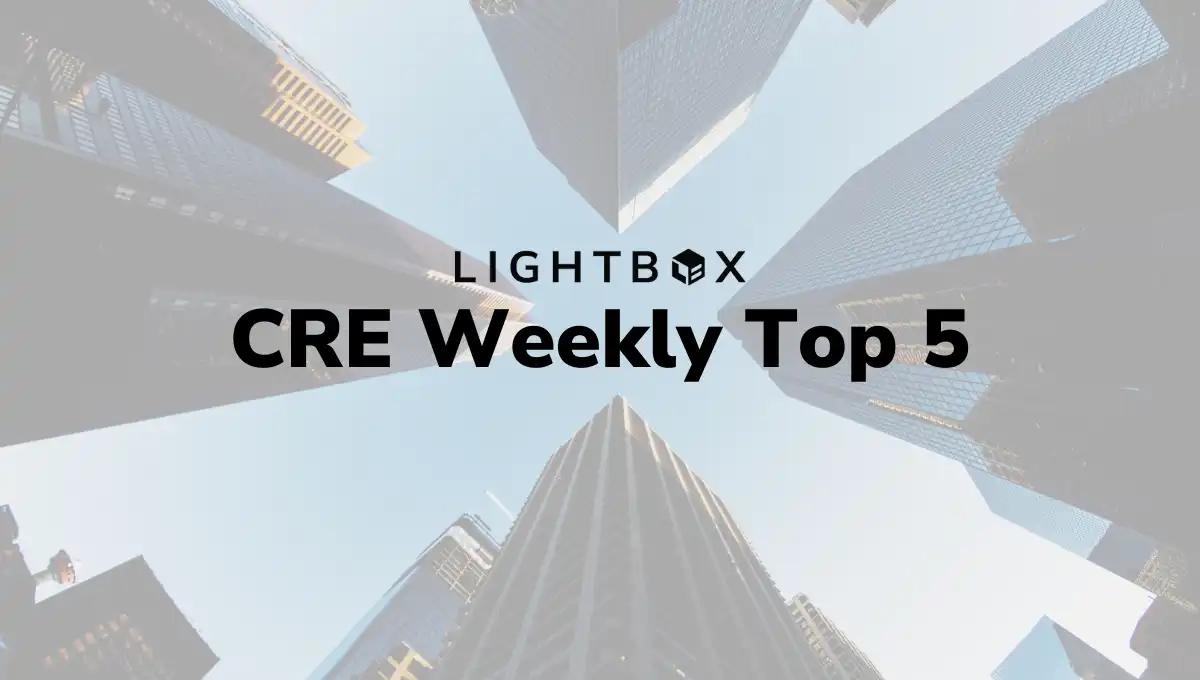For the week of Sept. 9-13, 2024
Last week, the Presidential debate between Trump and Harris brought talk about economic policy and the latest inflation and jobs data to the top of news cycles and fueled speculation about what’s likely to come out of this week’s Fed meeting.
Here’s our latest top 5 list of the biggest weekly CRE news stories and why they matter.
- Core consumer and wholesale inflation came in slightly hotter than expected.
Two metrics that track pricing levels, the Consumer Price Index and the Producer Price Index (CPI and PPI, respectively) continued to show reassuring moderation in the latest reports. However, when excluding volatile categories such as food and energy, the core CPI—which focuses on underlying inflation—rose by 0.3%, slightly higher than the 0.2% estimate. One of the key components of consumer inflation, shelter, rose 0.5% accounting for 70% of the core increase.
Why It Matters: It was just a few weeks ago that the inflation figures were so encouraging that the market began buzzing about the Fed jumping right to a 50-bps cut. With an updated round of core inflation data coming in hotter than expected, the Fed is likely to agree to a more standard quarter-point rate cut this week.
- Unemployment claims rose slightly, but layoffs are not widespread.
The number of Americans who applied for unemployment benefits rose slightly to 230,000, although there are still no signs of widespread layoffs. The latest data shows that the U.S. labor market remains in good health despite declines in job openings and new hires.
Why It Matters: Any widespread weakening of the labor market could raise red flags about economic health and the possibility of a recession, so these numbers are important ones to watch in the coming weeks and months.
- The Real Estate Roundtable’s Sentiment Index points to an improving outlook.
The latest quarterly Real Estate Roundtable’s Q3 2024 Sentiment Index, which measures commercial real estate (CRE) executives’ confidence and expectations about market activity, was 64 in Q3, an increase of three points from Q2 and a more significant 18-point increase over last year. In more reassuring news, a significant 57% of respondents are optimistic that property asset values will be higher one year from now, and only 11% expect further declines.
Why It Matters: The latest RER survey data reflects that CRE leaders are growing increasingly more optimistic about market recovery, driven in part by a sense of expected stability in property values with a strong lean toward price appreciation. This is a noteworthy change compared to one year ago when price uncertainty and fears of falling asset prices kept investors on the sidelines.
- The LightBox Appraisal Index shows growing strength in July and August, setting expectations for a strong Q3.
The index of appraisal activity in the LightBox lender platforms increased to 72.1 in July and August, a nearly 9-point increase over Q2 and a more dramatic jump of 10.9 compared to last year.
Why It Matters: Given pricing uncertainty, the work of commercial appraisers is front and center. The market is keenly interested in an asset’s value as the dealmaking market struggles to find its footing. The strong July and August reading is an early sign that the Appraisal Index for Q3 could land well above 57.9 in Q3 2023.
- Austin’s office market is attracting attention while Portland, OR’s is struggling.
Tech giant Nvidia is actively searching for a large 300,000 square feet of office space in Austin, as is Elon Musk’s X which is shopping around for a new headquarters. Meanwhile, IBM Corp. is assuming the lease on a 320,000 square-foot building in North Austin that Meta Platforms Inc., the parent company of Facebook, is vacating. On the flip side, U.S. Bank, Portland’s largest bank with a strong presence in the metro area for over a century, announced it will not renew its lease in the iconic building that bears its name.
Why It Matters: These developments paint a picture of just how vastly different two metro office markets can be. Austin is positioned for a potential rebound, fueled by a bevy of strong factors working in its favor. CBRE, for example, listed Austin on its list of top 5 Tech Talent metros, driven in part by strong in-migration population growth post-COVID along with other Sunbelt metros like Raleigh and Charlotte. Based on data from the first eight months of 2024, environmental due diligence activity in Austin ran even with the industry benchmark (2%) while Portland, OR’s fell a dramatic 17%, according to output from LightBox’s ScoreKeeper model. The exit of U.S. Bank from downtown Portland will leave roughly 1.2 million square feet of office space vacant as the bank implements a workforce strategy of transitioning “key markets to hub status.”
For commentary on these CRE developments and more, tune in to the LightBox CRE Weekly Digest podcast.
Did You Know of the Week
Did you know that the source of the LightBox Appraisal Index is from two of our core lender platforms which typically procure $500 million in services annually?
